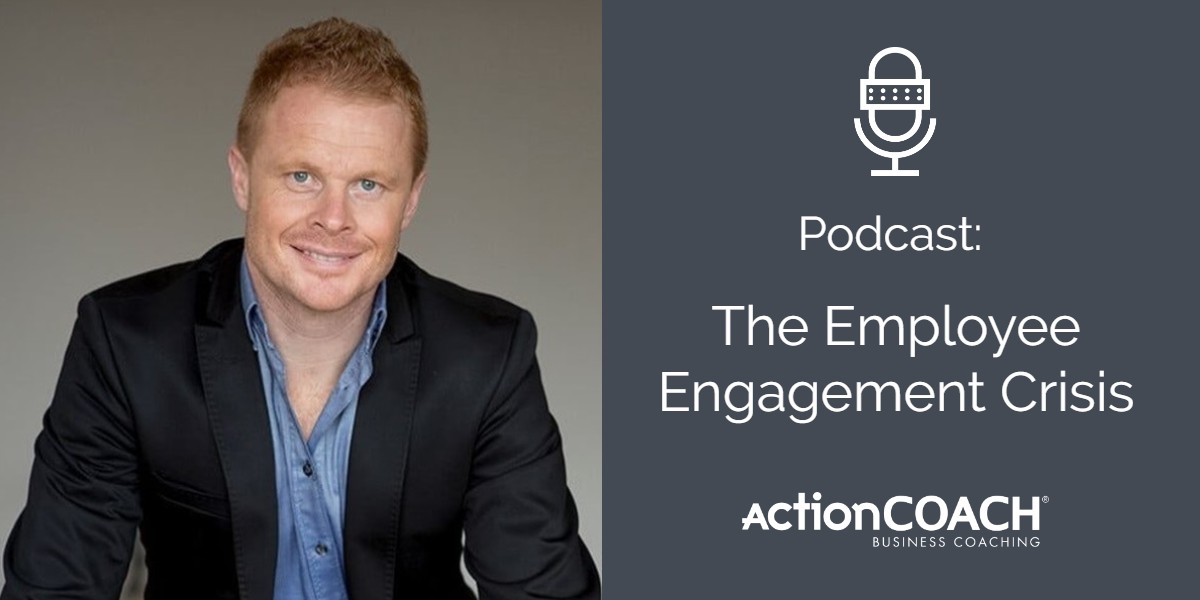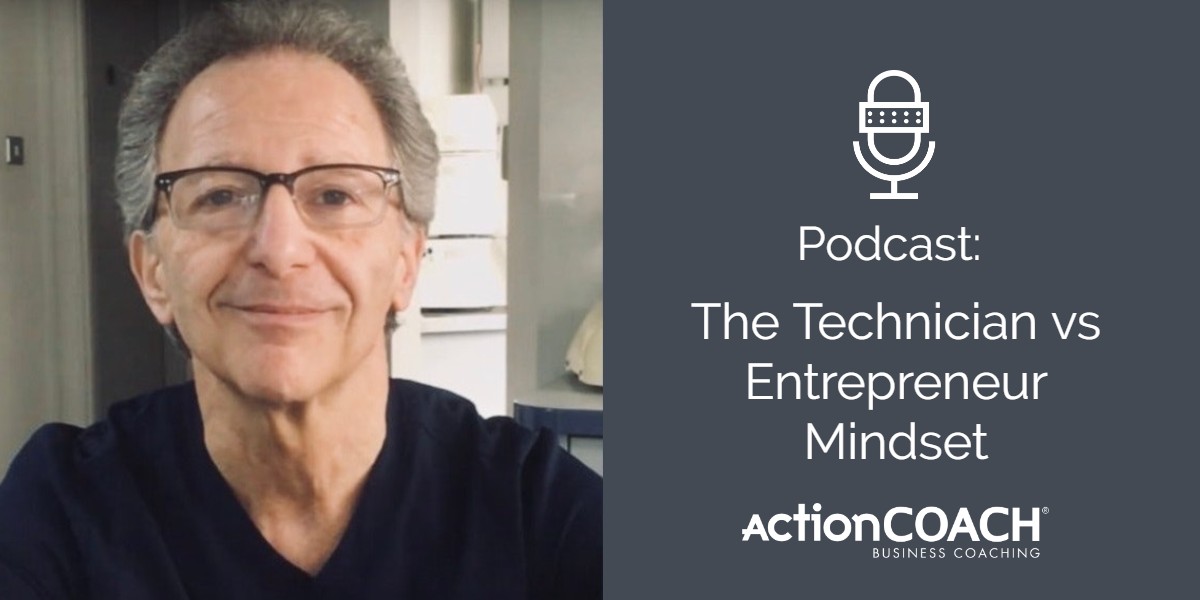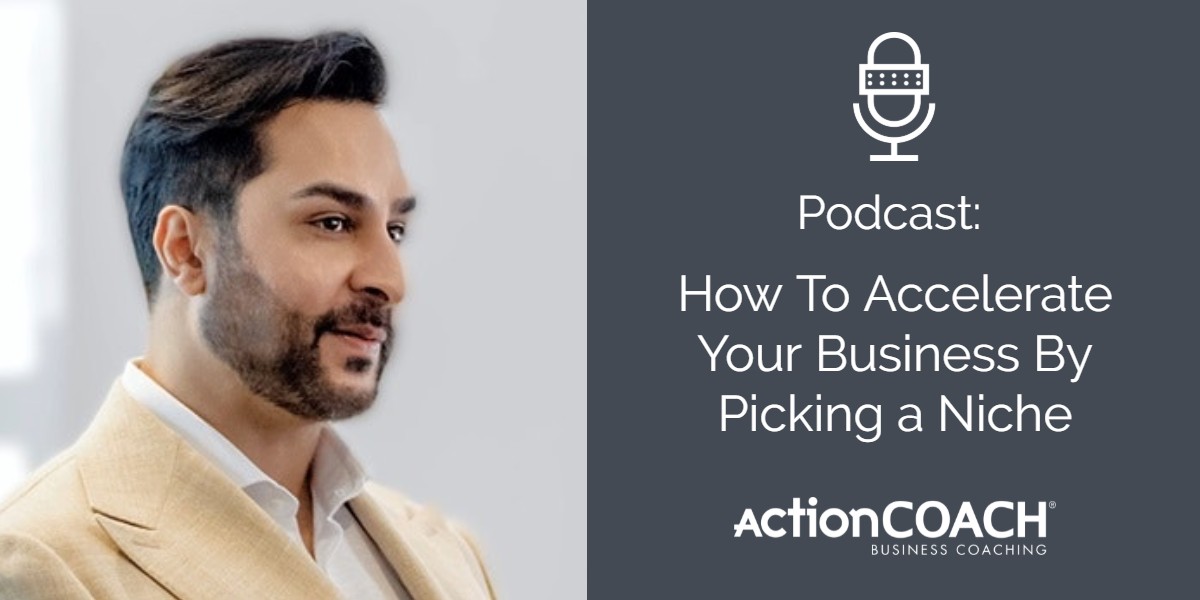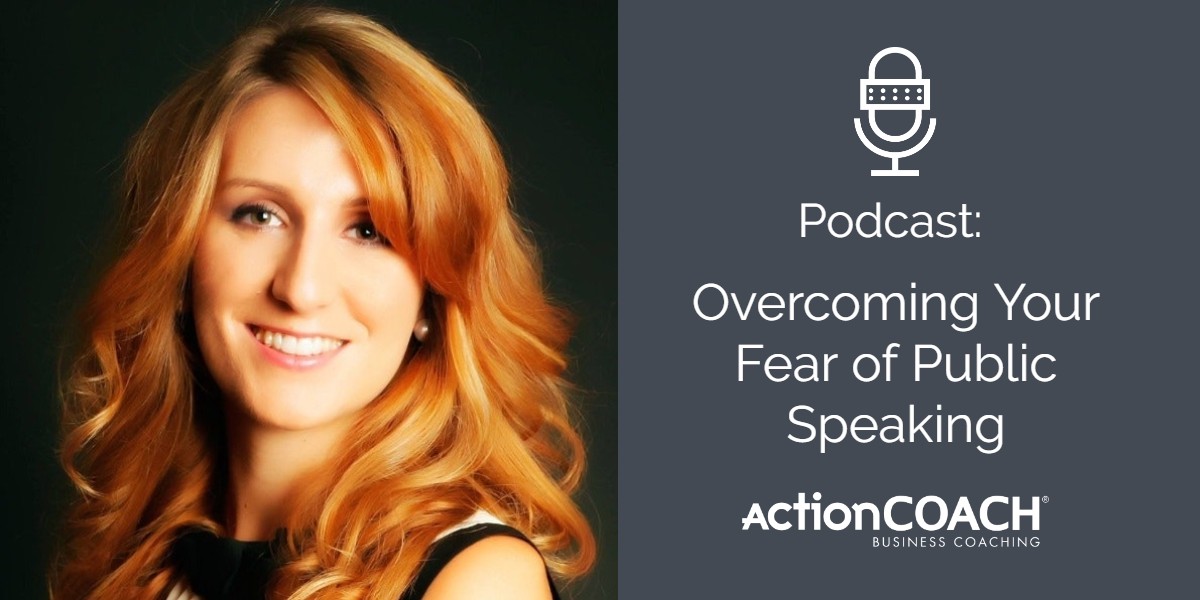Podcast: The Employee Engagement Crisis
Podcast: Play in new window | Download
In episode 3 of The Business Growth Agency podcast we talk to Richard Maloney, CEO and founder of Engage & Grow.
Richard is an international authority on team engagement. He leads over 150 employee engagement advisors across 75 countries.
In this short highly-practical interview he shares his advice on getting your employees feeling engaged and passionate about their work.
Click the play button above to listen.
Episode highlights
1:54 What is the employee engagement crisis and why should you care?
3:09 What does it mean for someone to be engaged at work?
5:30 Why you can’t train leadership and what Richard recommends instead
7:41 Common mistakes business owners make when it comes to culture and engagement
9:30 6 practical tips on how to improve employee engagement in your business
Links
Transcript
Margarida: On today’s podcast, we welcome Richard Maloney, CEO and founder of Engage & Grow, a company who are putting the heart back into businesses around the world. Richard is quickly becoming known as the world’s #1 team engagement expert, currently leading over 150 Engage & Grow coaches across 75 countries. I know Richard because I trained as one of his Engage & Grow coaches last year, and I’m particularly excited to talk with him again today. We are delighted to have Richard here with us today. He’s going to speak about the crisis in employee engagement. Welcome, Richard.
Richard: Margarida, it is an absolute pleasure to be with you today. Thank you for inviting me onto the call.
Margarida: Thank you. Richard, tell us a bit about yourself and your journey so far.
Richard: Sure. I’m a 42-year-old male living in Melbourne, Australia. I have a beautiful wife and three very small daughters, both twins at 1-year-old and a 4-years-old. Through the early days when I was coming through school sport was certainly something I was good at. I’m very competitive in nature. Throughout the years, last 20 years, I’ve worked with 7 elite sport teams in some capacity, and along the way, I won quite a lot of championships myself. I started to see a lot of successful elements that we brought into the business circuit at the time, which has really created Engage & Grow. I”m a very happy man, lot’s going on, and there’s a quick intro.
Margarida: You said that the world is living through an employee engagement crisis with serious and potentially lasting repercussions for the economy. Tell us a little bit about that.
Richard: I mean, you just need to look around the world today, Margarida, and tell me if most people are happy. They’re certainly not. In the workplace today, in the UK in particular, 80% of the people in the workplace are either doing less than is expected, or they’re just doing what is expected. They’re not really going there with high levels of energy and enthusiasm. They’re going there just getting through the day. Now, if that’s the type of world that you want to live in and you’re happy with or our listeners are happy with, then that’s fine, but it’s not the type of world that I want my kids to grow up in.
When I was learning business as a young man, I was consistently unhappy with quality of happiness in the workplace and getting the most out of leaders and employees. In my mind’s eye, the world is happy with mediocre, and I’m not. There has to be a better way. There has to be a sharper way, a smarter way, and a quicker way to take pressure off business owners to get people activated.
Margarida: What does it mean to be engaged?
Richard: Engaged is quite simply – as I mentioned there, is really being connected. Be emotionally committed to your company, being happy to be alive, taking every day as a gift, and living to help other people. People forget that life is a gift because getting a wage is a gift. Meeting new people is a gift. Learning new ideas and strategies and being able to grow mentally is a gift. Really, at its core is the gift in front of us every day. People are pointing fingers at everyone else for creating environments that are disengaged.
It’s up to the person to become engaged, and it’s up to the business owners to help them become engaged. Engagement is when people come to work, and they do more than is expected. They come to work, and they get creative. They come to work, and they want to buy into the future vision of the company.
Margarida: You are the founder and the CEO of Engage & Grow. Tell us about the program you’ve developed with Engage & Grow.
Richard: Sure. We call it the Group Activation System. People need to be connected in like a tribe to get the best out of each other, even introverts, even people in silo jobs where they’re by themselves. We know that we can get the best out of people through connecting people. We also know that everyone on this planet has the same key neurological motivators, and so we also know that people have their key human needs. We also know how people learn the quickest. We put all of these elements into a melting pot, and we build a system for each and customize a system for each business depending on what they want to achieve, whether it be to create more emerging leaders, create more unity, improve culture, improve profit, improve productivity, improve engagement scores around the company, whatever it may be. To do that, you’ve got to make people move, the individual and then in the teams and then people outside of the teams. That’s what culture is. It’s about everyone thinking the same way and heading in the same direction.
The Group Activation System is usually a 12-week process that just unfolds to create breakthroughs within a team environment which could and does impact hundreds of people along the way. Our Engage & Grow coaches can go into an organization, and create dynamic shifts in a very short amount of time.
Margarida: You say training is dead. Why?
Richard: When it comes to leadership, when it comes to morale and engagement, we can’t train it in. If you could train leadership in, we would have 90% of leaders. We would have a whole organization full of leaders. All we do today is take people through workshops and training, workshops and training. Okay. If it worked, we would have highly engaged organizations. What companies do around the world is they take their middle managers or their senior managers, and then pick their high performers or whoever they may be, and they take them out of the business. They put them into an institutional thinking or business school to help them become better leaders.
It’s like taking dirty fish out of a dirty pond and putting them into a clean pond for a few hours a month, or a day a month, or a few hours a week, whatever it may be. Clean the fish down with this new leadership training and inspirational thinking and new ideas, and then the fish feel fantastic. They’re going to change the world. Then the clean fish, after their three or four hours of knowledge, information dumping, they go back into a dirty pond, and the communication hasn’t improved. The relationships haven’t improved. There’s still low levels of trust. Then, all of the sudden, the clean fish become dirty again.
And so what we’re saying is: that’s fine, you can go and learn [unintelligible] but if you want to create a cultural shift, you want to create high levels of engagement, it’s about creating a movement within an organization. So we get all the fish in the pond cleaning the fish pond down together. We don’t take them out of the fish pond, and when you do that, then the business organically grows significantly faster than any other way known today. It’s a journey. It’s a process, and it’s a cleaning down process.
Just in closing on that one, the number one role of a leader is quite simply to create more leaders. Are our leaders actively creating more leaders? Not enough of them. Otherwise, we would have more leaders on the planet, and the best organizations, quite simply, have a critical mass of leaders. Our leadership training needs to change. We need people to work with each other, connect with each other, push each other, develop each other, and challenge each other openly and honestly and in a safe environment.
Margarida: What are some common mistakes business owners make when it comes to engagement?
Richard: If you look at the best companies that are in the world today, they are people first, profit second. They understand the power of their business is in the hands of their people. Most business leaders think they… own their employees. See, they need to understand that they partner with their employees, and it’s about equality. As soon as you take a position of superiority, then you’re losing. Get in, and get to know your employees. Get in and get – see, no one cares how much you know until they know how much you care.
It’s the role of the leader to get out of the way and start connecting with people, and show them through actions how to treat people with empathy, how to understand people, and how to get in there and create a movement through influence and not through position. The first point is really understanding and getting further engaged with your people. There might be people in your workplace today who don’t need to be there. They’re going through the motions. You need to take action.
You need to obviously make a stand if that’s the case. You need to really get in there, and understand your people more than anything today, especially with the millennials coming through, the next generation. They’re craving growth. They’re craving purpose. They’re craving quality. They’re craving feedback all the time, and they’re craving development. It’s about really getting in and understanding, and not pointing the finger at them and saying you’re the problem.
There are times we go into the businesses around the world, and as soon as we create an equalization within the organization, companies just take the next level very quickly because of the energy in the organization improves dramatically. Get out of the way of the young people. Get them to set their own behaviors so they don’t run their own show. Just go in, and get to know your people. Get out of their way, and let them make mistakes. Let them grow. Let them develop.
Margarida: Final question. Would you give us some practical tips on how to improve employee engagement?
Richard: There’s many tips. The first tip would be… is to speak to you, and get a diag for their business. We can study your business, and we can actually dive right into it and we can give you a road map for success, which we can roll out for you. You want to create – first, you want to do an evaluation of who’s in your room, who’s in your business. Employee engagement surveys, they’re a dime a dozen. We just use a very simple one to find out how many people are actually connected to your business, and we’ll give you a percentage number so 10%, 20%, 50%, whatever it may be. Then we benchmark from there.
We break the company into heart and brain, two key areas of your business, the heart being communications, your relationship, your culture, your leadership and your brain being your processes, your systems, your product. You get everyone to focus on the heart of the business every day, every week. You’re going to be eight times more successful over a ten year period, and that’s what Deloitte and those companies are telling me. The companies that focus on the heart and soul of their business primarily are eight times more successful over a ten-year period. Then you need to really get people aligned into the future. Really, there’s six steps to employee engagement. Evaluate, and then you’re getting buy-in. Then you’re getting your people aligned.
You get people aligned through certain strategies. Storytelling is very powerful, reward and recognition on a weekly basis, setting the behaviors that everyone agrees to, not just the owner, changing your values, and turning them into behaviours. Then you really want to then unify your team. Get them aligned and unify them and unifying them means really healing your business, getting rid of bad relationships, toxic relationships, so taking them from a negative to a positive environment. Again, that’s through our roundtable feedback, which is a very quick and fast way to… we can all look at areas we need to improve on and areas that we’re very good at.
Then you want to get people to engage. Get people to force communication amongst you, amongst your clients. Get everyone speaking to your clients. Get everyone speaking to other people in the organization. Find out new things about each other. The happiest people on the planet quite simply have the most meaningful relationships and have multiple of them, and that’s a fact. Once after you’re engaged, then you’ve got to grow, and then that’s about managing the growth of the organization.
Quite simply, it’s about evaluating. You are getting people to buy in. It’s about aligning. It’s about unifying, and then it’s about engaging. Then it’s about growing. There are the six steps to employee engagement.
Margarida: Thank you very much, Richard.
Richard: It’s an absolute pleasure, Margarida, and it was great to meet you there in the training session in the UK some months ago. We’re very lucky to have someone of your talent on the team, and I’m really looking forward to helping you along the way with your clients. Just let us know how much help you need, and we’ll be there for you.
If you’ve enjoyed this podcast and you want us to make some more, then do let us know. Write us a review on iTunes, or leave a comment on the The Business Growth Agency Facebook page. Thanks for listening, and join us again next time.




